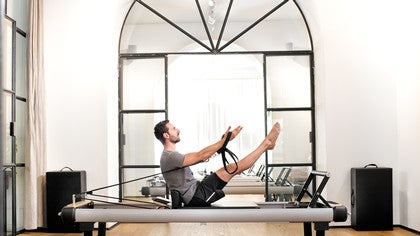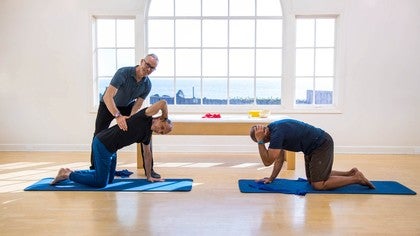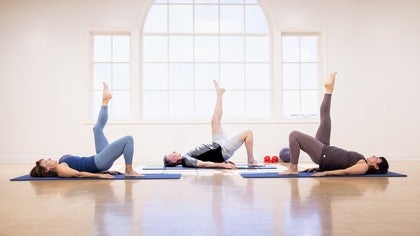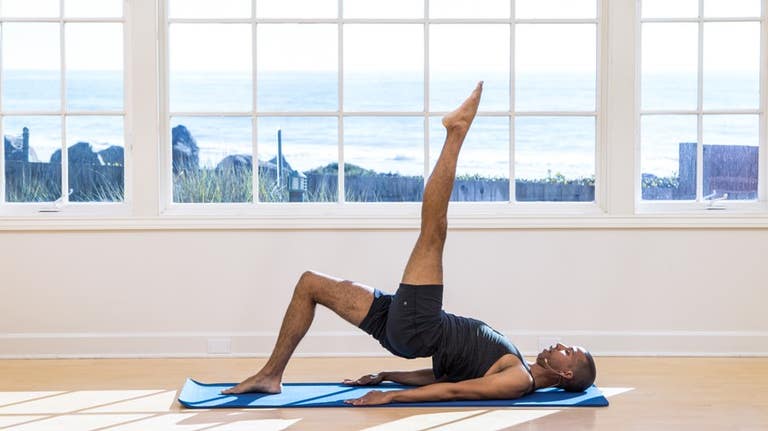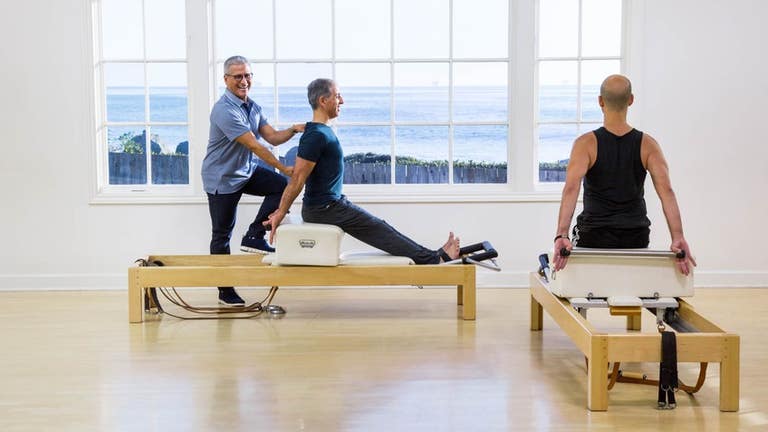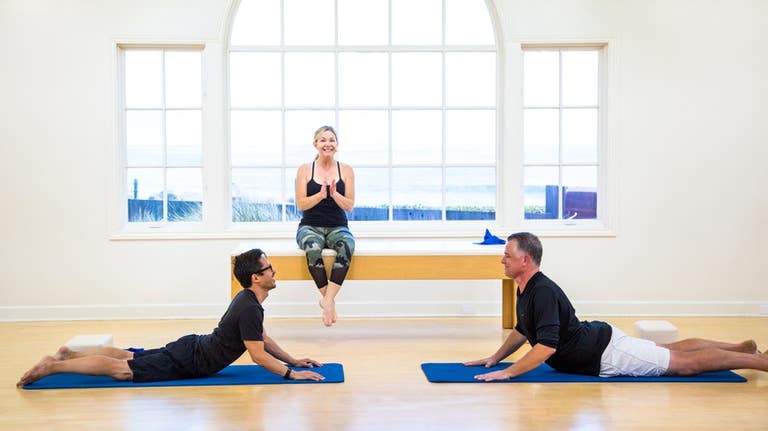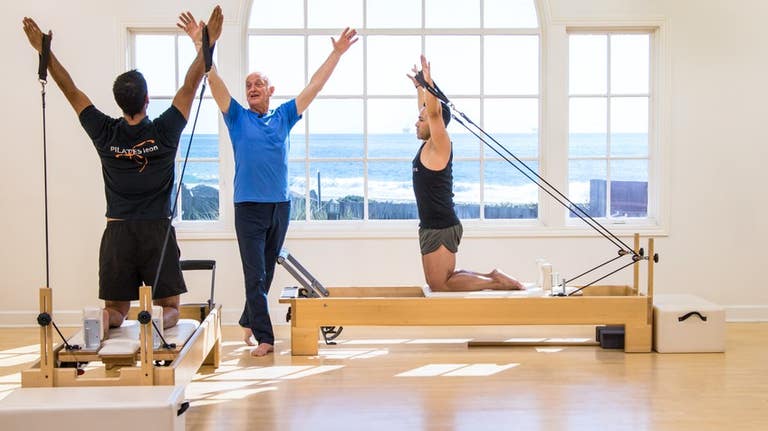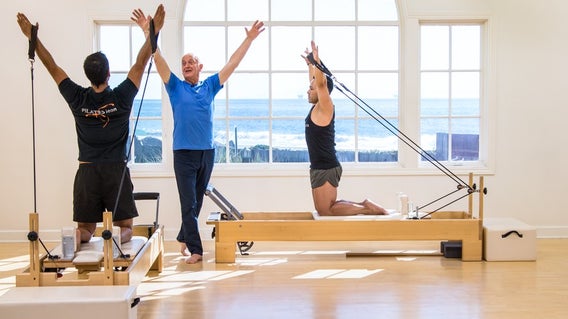Pilates for Men: An Introduction
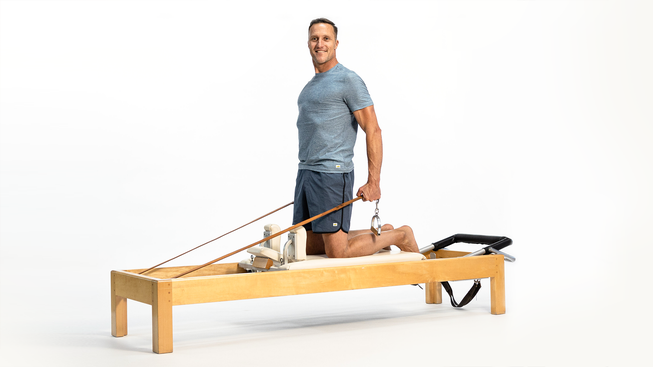
Pilates for Men: An Introduction
There is a misconception that Pilates is a stretching based exercise regime for women. This false belief couldn’t be further from the truth as more and more men, from all walks of life, are reaping the benefits of Pilates. Originally known as Contrology, Pilates was created by a man, Joseph Pilates, predominantly for men. The benefits of Pilates for men is catching momentum as elite athletes use the exercises to fine-tune their performance and prevent injury. Any man seeking to feel better, do everyday activities more effectively, increase strength, mobility, and balance will find a consistent Pilates practice is the answer.
Pilates History
Joseph Hubertus Pilates was born in 1883 in Germany and was a sickly child. Determined to overcome any ailment, he studied various forms of movement and exercise regimes becoming stronger and later on, an accomplished skier, gymnast, diver, and boxer.
Joseph was fascinated by the Classical Greek ideal of a man balanced in mind, body, and spirit. In 1912 he taught self-defense to Scotland Yard and during the first World War he rehabilitated soldiers in their hospital beds with rigged springs. Those beds influenced the apparatuses he created and what we use in Pilates studios today.
While still in Germany he was asked to train the German army with his exercises. He declined and set forth for the United States. On the voyage, he met his partner Clara and together they opened and ran a fitness studio naming his method ‘Contrology’ in New York City. Joseph Pilates was known as the person to see to build strength or rehabilitate from an injury and was especially revered by the dance community.
Joseph Pilates believed that optimal health encompassed a whole lifestyle, from food choices to how to bathe, getting out in nature, and functional movement (his methodology). He authored 2 books, Your Health in 1934 and Return to Life Through Contrology in 1945. The principles in both books are still relevant today.
A group of Joseph Pilates’ students, each with their own unique history and interpretation of the work carried on his teachings. These special students are known as ‘The Elders’ or 1st generation teachers. Joseph Pilates was a visionary, ahead of his time and wanted everyone in the world to do his exercises.
Pilates Benefits for Men
There are numerous benefits of Pilates for men, whether you’re an athlete, weekend warrior, injury recovery, or a sedentary male.
The ability to move freely, with control and ease for everyday activities, a favorite pastime or sport is essential to one’s quality of life and longevity. Pilates is not “just stretching” nor is it easy. Unlike many other methods of exercise, Pilates doesn’t compartmentalize. This means that even if a particular exercise has a main anatomical focus, such as abdominal strengthening, the whole body is working synergistically. The rest of the body is engaged in some manner to either stabilize, aid in releasing another part of the body or both.
For example, the Pilates poster exercise the 'Hundred’ which focuses on strengthening the abdominals (in layman terms, the lower abs) along with the respiratory muscles for greater breathing capacity. Endurance is built during The Hundred by the number of repetitions. Other parts of the body that are utilized in this exercise are the hip extensors (aka back of the legs & under the butt), inner thighs to keep the legs together and reaching out, the upper back muscles are stabilizing to hold the position, and the pumping arms challenging the control for commencing with the exercise. Holding the legs just off the ground or as high as 45 degrees requires a length of the muscles of the legs and with time and consistency increases flexibility.
Pilates enhances a man’s control, coordination, balance, and proprioception of his body and focuses the mind. In Pilates, no one muscle is overdeveloped creating suppleness, support, increased balance, and less weakness in the body. All of this helps to prevent injury and/or recover from an injury. It’s noteworthy to mention that Pilates for men enhances sexual performance and pleasure through stamina, endurance, and strengthening of the pelvic floor.
Featured Blogs
Frequently Asked Questions
Can Pilates help you get abs?
Pilates is famously known for its “core” workouts that fire up those deep, hard to reach abdominal tissues commonly referred to as the “lower abs”. When executed correctly Pilates strengthens all of the abdominal muscles, not in isolation but rather in a balanced way.
In actuality “the core” includes the abs, not just the ‘6 pack’ muscles, pelvic floor, muscles of the back, and musculature around the hip to enable a strong center in which to move from. This produces strong abs, a supported back, optimal posture, and increased breathing capacity. It’s very functional.
If you’re referring to an aesthetic goal of a flat stomach or 6 pack, it will depend on the individual. Pilates will give you abs but ‘seeing it’ depends on body type, quality of sleep, and especially nutrition. Decreasing adipose tissue (fat) and visceral fat (fat around the organs) along with strengthening and adding cardio could be the key. However, function over aesthetics serves long term longevity.
Can I tighten my whole body by only doing Pilates?
Pilates is a whole-body system that especially targets the smaller intrinsic muscles of the body. That basically means the deeper muscles as opposed to the large superficial muscle groups such as the quadriceps (front of the thighs) and gluteus maximus (butt), which you commonly build in many other methods of exercise, such as weight lifting.
Depending on the instructor and class, your Pilates instructor can design a session that adds more cardio and endurance or an additional focus on larger muscle groups. Yes, Pilates can tighten your whole body. If you’re aspiring for a certain look such as being chiseled and lean, you have to consider other factors such as your body type, genetics, and nutrition.
Can you build muscle without weightlifting?
Muscle is built through resistance and by creating an environment that puts your muscles under tension. Pilates is resistance training through bodyweight exercises with the Mat work and through exercises with springs from the apparatuses such as the Reformer and Chair. So, yes you are building muscles with Pilates and can build muscles without weightlifting.
The answer to this comes down to what you’re aiming to achieve. Muscles get bigger by applying external stress, so the bigger the stress, the bigger the muscle. For example, the more weight used when exercising, then bigger the muscles will potentially get. Muscles require support, such as adequate recovery time, quality sleep, decreased stress, and optimal nutrition as well as factoring your body type.
How helpful is Pilates at building muscle for men?
Pilates is one of the best cross-training regimes any man can do. With its focus on alignment and targeting smaller and deeper muscle groups, it sets the precedent for a balanced body. Pilates makes a body less susceptible to injury because it gives one suppleness and the ability for more power.
Pilates builds and tones muscle, however, the visual outcome will depend on many factors including nutrition, body type, quality of sleep, and stress level. If a man is looking to build more muscle, whether lean or bulk, Pilates is the perfect foundation. Cross-training between Pilates and weight training is the best method of building muscle.
Featured Classes for Men
Your Pilates Anytime Membership Benefits
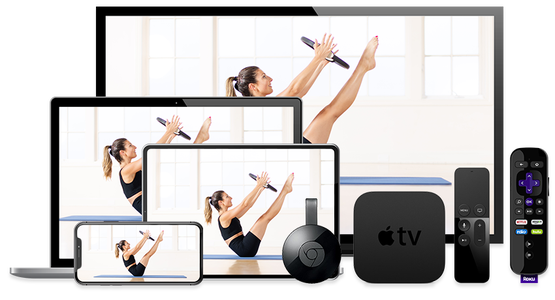
- 15-Day Free Trial
- Unlimited Access to Thousands of Classes
- 95+ Pilates Programs and Challenges
- No Ads
- New Videos Weekly
- Available on All Your Favorite Devices
